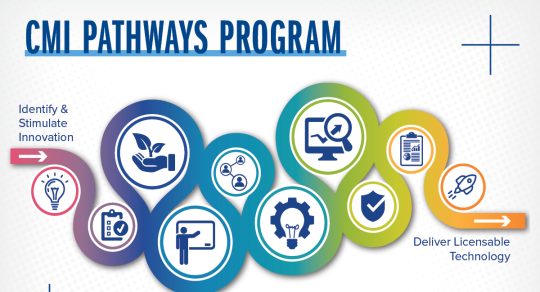Residency
Interventional Radiology
The Interventional Radiology Residency at Penn State Health Milton S. Hershey Medical Center is a five-year, ACGME-accredited program that accepts one resident per year.
On This Page
The integrated Interventional Radiology Residency, a program of the Division of Cardiovascular and Interventional Radiology in Penn State Medicine’s Department of Radiology, is a five-year program that begins after the successful completion of an internship year. The goal of the residency is to train individuals for independent practice in a private, academic or military practice setting. Residents receive training in all aspects of the modern interventional radiology practice.
There are more than 50 faculty members, including at least five who are CAQed interventional radiologists.

Program Overview
The first three years of the program provide a solid training experience in all subspecialties of diagnostic radiology, as well as three months in interventional radiology. In the final two years of training, the resident will embark on interventional radiology-specific training. This includes formal clinical and procedural training in the IR suite, as well as time in IR-specific clinics. In addition to a month in the intensive care unit, residents will rotate with clinical services that have a history of working closely with IR not only at Penn State Health Milton S. Hershey Medical Center, but also wherever a graduate chooses to practice. Upon completion of training, graduates will be prepared to enter the multi-faceted specialties of diagnostic and interventional radiology.
Vascular and non-vascular interventions will include, but are not limited to:
Diagnostic and interventional arteriography and venography
Oncologic and transplant interventions
Embolotherapy
Vascular access and dialysis access management
IVC filter placement and complex IVC filter retrieval
Percutaneous biliary interventions (including choledochoscopy)
Genitourinary interventions
Gastrointestinal interventions
Vascular malformation interventions
Venous insufficiency interventions
Transjugular intrahepatic porto-systemic shunt creation and management
Women's health interventions
Complex drainage procedures
Non-invasive vascular imaging (vascular ultrasound, CT angiography, MR angiography)
Residents spend dedicated time in IR clinics, where a variety of patients are seen for pre-procedure evaluation and post-procedure follow-up. Interventional radiology-related rotations encourage a multidisciplinary approach to training. A close working relationship exists, encompassing the clinical and academic activities of the Division of Interventional Radiology and the Department of Radiology and various specialties in the both the medical and surgical realms.
In addition to rotations with referring clinical services, participation in multi-specialty treatment planning conferences contribute to the development of a resident’s clinical skills as well as the understanding of IR's role in the patient's global clinical care. Research is an integral part of the residency, providing the opportunity to explore, in greater depth, specific aspects of an interventional radiology practice and procedures.
Participation in the Quality Assurance (QA) process, including a QA project, is an important and required component of residency training, intended to maintain and improve overall patient care. For those with an interest in medical education, there are institution-wide and departmental opportunities to learn how to be an educator, as well as to actively participate in the education of Penn State College of Medicine medical students.
Because three of the five years in residency are spent in diagnostic radiology, those interested should also to learn more about the diagnostic radiology component of interventional radiology training.
Learn More about the Residency
General Application Information
Applications to the integrated Interventional Radiology Residency must be made through ERAS (the Electronic Residency Application System).
Candidates for residency are considered during the fourth year of medical school. On rare occasions, consideration can be made during or after the internship year.
Interview Process
A personal interview is required for admission. After review of submitted applications, selected candidates are invited to Hershey for interviews.
All positions are filled through the National Residency Matching Program.
Program Prerequisites
The residency is a five-year program (PGY-2 to PGY-6). All residents will need to complete a clinical year (PGY-1) of ACGME-approved training. This year must be accredited clinical training in internal medicine, pediatrics, surgery or surgical specialties, obstetrics and gynecology, neurology, family practice, emergency medicine or any combination of these. This clinical year will usually be the first post-graduate year. No more than a total of three months may be spent in radiology, radiation oncology and/or pathology.
Although not a prerequisite, a month in the intensive care unit during the intern year is encouraged. All clinical training must take place in an ACGME-approved program.
Current Residents

PGY-5 Resident, Interventional Radiology Residency

PGY-4 Resident, Interventional Radiology Residency

PGY-3 Resident, Interventional Radiology Residency

PGY-2 Resident, Interventional Radiology Residency

PGY-2 Resident, Interventional Radiology Residency






